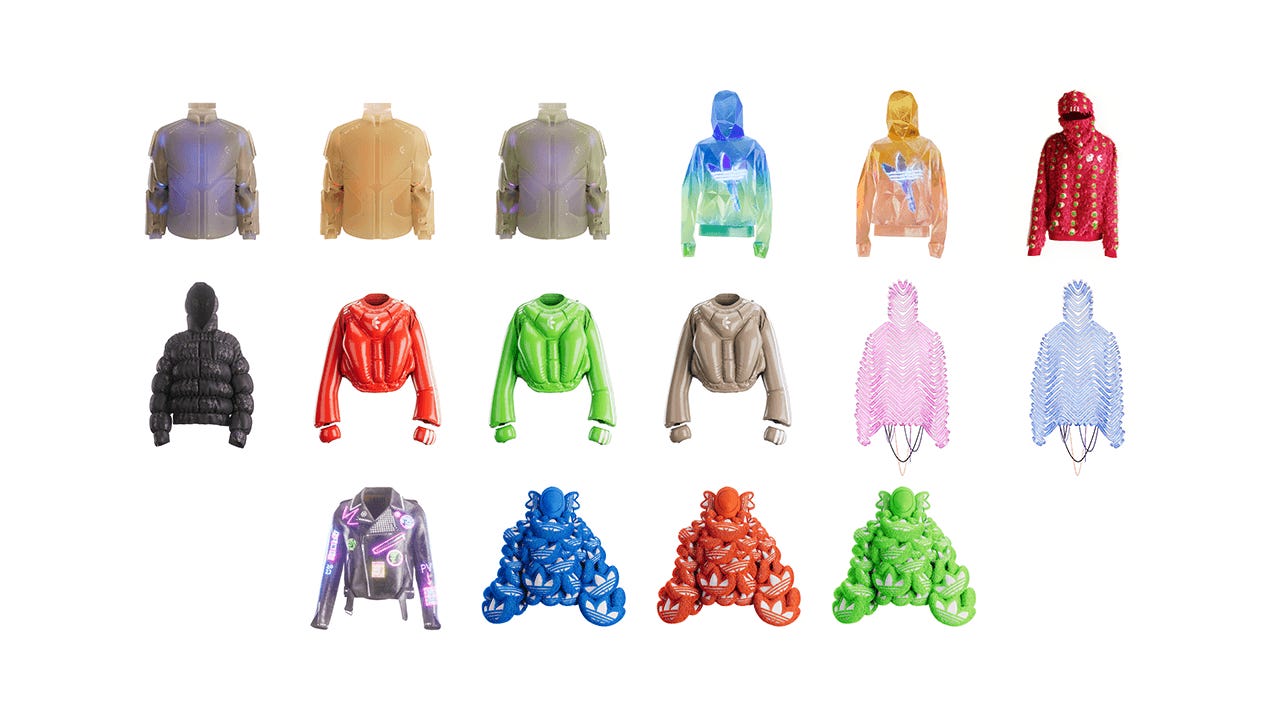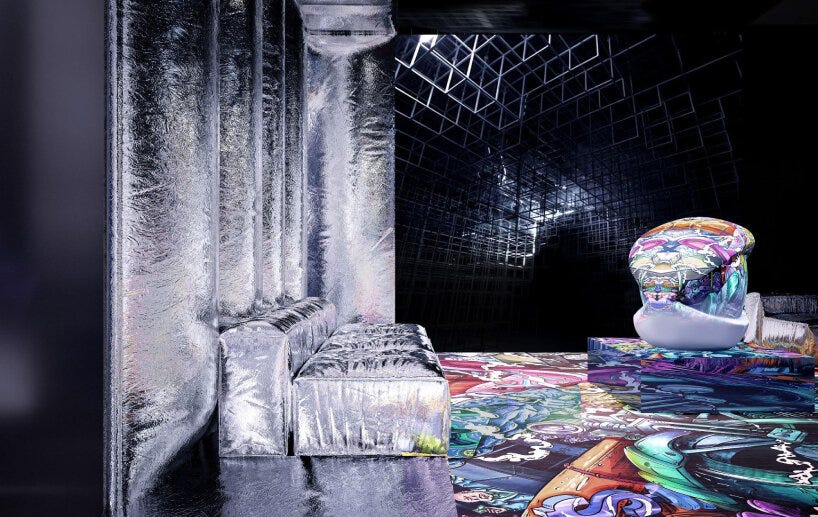NFT Edition: Redefining Art with Multisensory NFTs
Immerse, interact, and reshape your digital art experience.
NFTs are no longer just about owning digital images; they’re becoming a gateway to fully immersive and multisensory artistic experiences. We now stand at the threshold of a new frontier in digital art, where NFTs are evolving into dynamic, interactive works that blur the lines between sight, sound, touch, and space. This shift is redefining how creators express themselves and how collectors engage with their art.
From virtual reality galleries to haptic technology and phygital creations, the next wave of NFTs is about more than what we see. It’s about what we feel, hear, and even co-create as participants in a living, breathing art ecosystem. Here's how multisensory NFTs are reshaping digital art and ownership as we know it.
The Era of Multisensory NFTs
Beyond the Visual with Sonic NFTs
Sound has long been an underexplored medium in the NFT space, but it’s becoming a vital layer of multisensory art. Sonic NFTs merge audio and visual elements to create dynamic, evolving works, drawing collectors into a complete sensory experience.
Agoria’s Phytocene is a prime example of this innovation. This NFT uses biometric data from plants to generate generative audio compositions, creating an ongoing collaboration between nature, technology, and the artist. The result? A unique piece of digital art that continuously changes based on real-time inputs.
Agoria, Nicolas Desprat, Nicolas Becker - Phytocene
Moving forward, platforms like Async Art are allowing collectors to shape NFTs dynamically. For instance, music-based NFTs can change their soundscapes based on metadata updates or even purchaser interactions, meaning the owner directly influences the trajectory of the work. This fluidity challenges traditional ideas of what it means to “own” art, turning it into an experience rather than an object.
Haptic NFTs and the Art of Touch
Haptics, or technology that creates physical sensations, is bringing a tactile dimension to the NFT universe. This innovation is bridging the physical and digital worlds, transforming the traditionally passive act of viewing art into an embodied, sensory experience.
Imagine owning an NFT that reacts to your touch through haptic feedback devices like the Woojer Vest or SenseGlove. Vibrations, textures, or even thermal changes could all be felt as you interact with the art. This idea goes beyond "looking" to fully experiencing art with your body.
Now consider how neuroadaptive feedback adds an even deeper layer of immersion. For example, an NFT installation tied to your biometric feedback might alter its form in response to your heart rate or skin conductivity. These elements unite art and viewer, creating a relationship that feels more personal and alive.
Notable artists and design studios are also experimenting with tactile NFTs embedded in sculptures or other objects. These “phygital” hybrids combine the permanence of physical art with the dynamic adaptability of digital formats.
AR/VR NFTs and Spatial Immersion
Augmented and virtual reality are transforming the way we experience space, serving as a canvas for NFTs that can be inhabited rather than observed. Unlike traditional digital images displayed on flat screens, AR/VR NFTs invite users to enter and traverse three-dimensional environments, blurring the boundaries between the artist’s vision and the real world.
Take VERSE SF, for instance, an AR-based initiative embedding NFTs into physical public spaces. Users simply scan urban landmarks, revealing hidden digital layers that coexist with our physical surroundings. This blend of real and virtual worlds demonstrates how NFTs can transform the everyday into something extraordinary.
Art & tech come together in a unique NFT exhibition with cutting-edge holographic display technology.
Meanwhile, VR artists like Carrie Able are using virtual reality to expand the narrative potential of NFTs. Her multidimensional exhibits combine sound, visuals, and interactive exploration to create experiential digital landscapes where the line between viewer and participant dissolves.
These immersive technologies are turning art into occasions shared in space and time. They invite collectors, curators, and artists alike to collaborate in building living, breathing art ecosystems.
The Phygital Art Revolution
The concept of "phygital" art is gaining traction, combining the tangible and intangible into seamless, interactive works. Phygital NFTs integrate sensors or blockchains directly into physical items, creating a dual existence for artworks in both the material and digital dimensions.
Types of Phygital NFTs include:
Interactive Wearables like NFT-enabled clothing, where blockchain integration allows for programmable functions or exclusive Metaverse perks.
Virtual Gear for New Realities: adidas Originals launches inaugural NFT wearables collection
Dynamic Sculptures that adapt in response to data, such as temperature, Holder activity, or even cryptocurrency market trends.
Mutable Canvases equipped with augmented settings that change based on metadata updates, providing endless reinterpretations.
These dual-purpose creations challenge traditional notions of authorship and ownership. Imagine owning an artwork that comes alive when displayed in different settings or interacts with other NFTs in the chain. Phygital art feels like both an artifact and an algorithm, continually reinventing its meaning based on context and interaction.
Preservation in Flux
One fascinating challenge is how to preserve phygital art when its very nature is to adapt and evolve. Conventional conservation methodologies fall short when dealing with NFTs programmed to change over time. Solutions will likely emerge from adaptive platforms that archive multiple states of the artwork while preserving its code, metadata, and sensory layers.
Toward Experiential Ownership
The shift in NFTs from static objects to multisensory, adaptive experiences is no accident. It aligns perfectly with Web3’s ethos of decentralization and user participation. Art ownership is no longer about having exclusive content; it’s about participation, immersion, and the creation of deeply personal connections with art.
With technologies like biometric feedback, AR/VR integration, and programmable soundscapes, ownership transforms into an ongoing dialogue between the art, its technology, and the collector.
Emerging Frontiers
Looking ahead, the future of NFTs may include:
Neuroadaptive NFTs that align dynamically with the collector’s emotional or cognitive state.
Geo-local AR NFTs embedded in natural or urban environments, enriching our interaction with physical landscapes.
Sensory Galleries emphasizing not just visuals, but also touch, sound, and even smell as artistic materials.
AKNEYE's phygital space by ftNFT immerses visitors in venice during art biennale 2024
These developments don’t just represent the emergence of new art formats; they signal a fundamental shift in how humans interact with media. NFTs become much more than assets in a wallet; they become living, multisensory companions.
The Future of Feeling Digital Art
We’re witnessing the transformation of NFTs into an entirely new art form, one where aesthetics, interactivity, and ownership all converge. What does this mean for the future? More than just visual works locked behind screens, the NFT art of tomorrow will be something you can feel, hear, and exist within.
Multisensory NFTs bridge the gap between creator and collector, offering living systems rather than static commodities. They reshape not just how we own art, but how we perceive and participate in it.
Now the question remains for you, the collector and enthusiast of this digital art evolution: What role will you play in shaping this new frontier?










